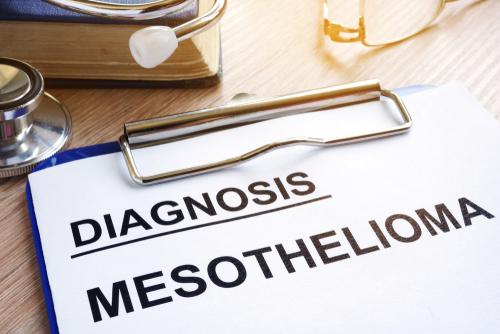Mesothelioma Diagnosis: Mesothelioma is a rare and aggressive form of cancer primarily linked to asbestos exposure. For those in the United States who may have been exposed to asbestos, either through work or environmental factors, understanding the process of mesothelioma diagnosis can be a critical first step toward managing the disease. If you or a loved one suspect you may be at risk, this comprehensive guide will walk you through everything you need to know about mesothelioma diagnosis, from recognizing symptoms to navigating the diagnostic process, all explained in a beginner-friendly way.
This article provides a detailed, human-written exploration of mesothelioma diagnosis to help you understand what to expect, how to prepare, and what steps to take. We’ve structured it as a listicle to make the information digestible and actionable, with a focus on clarity and SEO optimization to ensure it’s both helpful and discoverable. Let’s dive in.
1. Understanding Mesothelioma Diagnosis: What Is Mesothelioma?
Mesothelioma is a type of cancer that affects the mesothelium, a thin layer of tissue that covers most internal organs. The most common form, pleural mesothelioma, impacts the lining of the lungs, but it can also affect the abdomen (peritoneal mesothelioma), heart (pericardial mesothelioma), or testicles (testicular mesothelioma). The primary cause is prolonged exposure to asbestos, a naturally occurring mineral once widely used in construction, insulation, and manufacturing.
A mesothelioma diagnosis is the process of identifying this cancer through a combination of medical history reviews, physical exams, imaging tests, and biopsies. Because mesothelioma symptoms often mimic those of less severe conditions, getting an accurate diagnosis can be challenging. Early detection is crucial, as it significantly improves treatment options and outcomes.
For beginners, it’s important to know that mesothelioma diagnosis starts with recognizing potential risk factors, such as working in industries like construction, shipbuilding, or manufacturing, where asbestos exposure was common before regulations tightened in the 1970s and 1980s.

2. Recognizing Symptoms That Lead to Mesothelioma Diagnosis
The first step in a mesothelioma diagnosis often begins with noticing symptoms, which can be subtle and easily mistaken for other conditions. Symptoms vary depending on the type of mesothelioma but typically develop slowly over time. Here’s a breakdown of common symptoms to watch for:
-
Pleural Mesothelioma (Lungs): Persistent cough, chest pain, shortness of breath, fatigue, unexplained weight loss, and difficulty swallowing.
-
Peritoneal Mesothelioma (Abdomen): Abdominal pain or swelling, nausea, loss of appetite, bowel changes, and weight loss.
-
Pericardial Mesothelioma (Heart): Chest pain, irregular heartbeat, difficulty breathing, and fatigue.
-
Testicular Mesothelioma (Testicles): Testicular swelling or lumps (rare).
If you experience these symptoms and have a history of asbestos exposure, consult a doctor immediately. Early mesothelioma diagnosis relies on recognizing these warning signs and acting quickly, as symptoms may not appear until 20–50 years after asbestos exposure. For beginners in the U.S., it’s helpful to know that occupational exposure (e.g., construction workers, veterans, or factory workers) or secondary exposure (e.g., through family members’ work clothes) increases risk.
3. Initial Steps in Mesothelioma Diagnosis: Consulting a Doctor
Once symptoms or risk factors are identified, the mesothelioma diagnosis process begins with a visit to a healthcare provider. Here’s what to expect during the initial consultation:
-
Medical History Review: Your doctor will ask about your history of asbestos exposure, including jobs, locations, or time periods where exposure may have occurred. Be honest and thorough, as even brief exposure decades ago can be relevant.
-
Physical Examination: The doctor will perform a physical exam to check for signs like fluid buildup, lumps, or breathing difficulties.
-
Symptom Discussion: You’ll describe your symptoms in detail, including when they started and their severity.
For beginners, it’s important to choose a doctor familiar with asbestos-related diseases. In the U.S., you might start with a primary care physician, who may refer you to a specialist, such as a pulmonologist (for lung-related symptoms) or an oncologist (for cancer expertise). Preparing a list of symptoms and exposure history beforehand can make this visit more productive.
4. Diagnostic Tests for Mesothelioma Diagnosis: Imaging Scans
If your doctor suspects mesothelioma, they’ll order imaging tests to look for abnormalities. These tests are non-invasive and provide a clearer picture of potential issues. Common imaging tests in mesothelioma diagnosis include:
-
Chest X-Ray: Often the first test, it can detect fluid buildup or lung abnormalities.
-
CT Scan (Computed Tomography): Provides detailed images of the chest or abdomen, helping identify tumors or irregular tissue growth.
-
MRI (Magnetic Resonance Imaging): Offers a more detailed view of soft tissues and is useful for detecting spread to nearby organs.
-
PET Scan (Positron Emission Tomography): Highlights areas of high metabolic activity, which may indicate cancer.
These tests are critical for pinpointing abnormalities but cannot confirm mesothelioma on their own. They guide doctors toward the next steps in the mesothelioma diagnosis process. In the U.S., these scans are widely available at hospitals and imaging centers, and most insurance plans, including Medicare, cover them when medically necessary.
5. Confirming Mesothelioma Diagnosis: The Role of Biopsies
A biopsy is the gold standard for confirming a mesothelioma diagnosis. This procedure involves taking a tissue or fluid sample from the affected area and examining it under a microscope for cancer cells. Common biopsy types include:
-
Needle Biopsy: A thin needle extracts fluid or tissue from the lungs or abdomen. It’s minimally invasive but may not always provide enough tissue for a definitive diagnosis.
-
Thoracoscopy (for Pleural Mesothelioma): A small camera is inserted into the chest to view the lungs and collect tissue samples.
-
Laparoscopy (for Peritoneal Mesothelioma): Similar to thoracoscopy, this procedure examines the abdomen.
-
Surgical Biopsy: In some cases, open surgery is needed to collect a larger tissue sample.
A pathologist analyzes the sample to confirm mesothelioma and determine its subtype (epithelioid, sarcomatoid, or biphasic), which affects treatment options. For beginners, it’s reassuring to know that biopsies are performed under anesthesia, and complications are rare. Choosing a specialized cancer center, such as those recognized by the National Cancer Institute (NCI), can improve the accuracy of your mesothelioma diagnosis.
6. Staging in Mesothelioma Diagnosis: Understanding the Cancer’s Spread
Once mesothelioma is confirmed, doctors use staging to determine how far the cancer has spread. Staging is a critical part of mesothelioma diagnosis because it guides treatment plans. The most common staging system for pleural mesothelioma is the TNM system:
-
Stage 1: Cancer is localized to the lining of one lung, with no spread to lymph nodes or other organs. Treatment options are most favorable at this stage.
-
Stage 2: Cancer has spread to nearby structures, like the lung or diaphragm, but not to distant organs.
-
Stage 3: Cancer has spread to lymph nodes or nearby organs, such as the chest wall.
-
Stage 4: Cancer has spread to distant organs, like the brain or bones, making treatment more complex.
Staging may involve additional imaging or surgical exploration. For U.S. patients, understanding the stage of mesothelioma helps in discussions with your healthcare team about prognosis and treatment, such as surgery, chemotherapy, or immunotherapy.
7. Seeking a Second Opinion for Mesothelioma Diagnosis
Given the complexity of mesothelioma diagnosis, seeking a second opinion is a smart move, especially for beginners navigating this process. A second opinion can confirm the diagnosis, staging, or recommended treatment plan. Here’s how to approach it:
-
Find a Mesothelioma Specialist: Look for doctors at NCI-designated cancer centers or those with experience in asbestos-related diseases. Examples include MD Anderson Cancer Center or Memorial Sloan Kettering.
-
Gather Medical Records: Bring all test results, imaging scans, and biopsy reports to the second opinion appointment.
-
Ask Questions: Clarify any doubts about the diagnosis, staging, or treatment options.
In the U.S., most insurance plans cover second opinions, and many doctors encourage them to ensure accuracy. A second opinion can provide peace of mind and potentially uncover additional treatment options.
8. Challenges in Mesothelioma Diagnosis: Why It’s Often Delayed
Mesothelioma diagnosis is notoriously difficult due to several factors:
-
Long Latency Period: Symptoms may not appear until decades after asbestos exposure, making it hard to connect the dots.
-
Non-Specific Symptoms: Symptoms like cough or abdominal pain mimic more common conditions, such as pneumonia or irritable bowel syndrome.
-
Rarity of the Disease: With only about 3,000 cases diagnosed annually in the U.S., many doctors lack experience with mesothelioma.
For beginners, understanding these challenges can help you advocate for yourself. If you suspect mesothelioma, insist on thorough testing and consider consulting a specialist early. Persistence is key to achieving an accurate mesothelioma diagnosis.
9. Next Steps After Mesothelioma Diagnosis: Treatment and Support
Once a mesothelioma diagnosis is confirmed, the next steps involve planning treatment and finding support. Common treatment options include:
-
Surgery: To remove tumors, used primarily in early-stage mesothelioma.
-
Chemotherapy: Drugs like cisplatin and pemetrexed to shrink tumors or slow growth.
-
Radiation Therapy: To target specific areas and reduce symptoms.
-
Immunotherapy: Newer treatments, like pembrolizumab, to boost the immune system’s ability to fight cancer.
-
Clinical Trials: Access to cutting-edge treatments through research studies.
Beyond medical treatment, emotional and legal support are vital. Support groups, such as those offered by the Mesothelioma Applied Research Foundation, provide community and resources. Additionally, if your asbestos exposure was work-related, you may be eligible for compensation through lawsuits or asbestos trust funds. Consult a lawyer specializing in mesothelioma cases for guidance.
10. Tips for Navigating Mesothelioma Diagnosis in the U.S.
For beginners facing a mesothelioma diagnosis, here are actionable tips to stay informed and empowered:
-
Educate Yourself: Learn about mesothelioma through reputable sources like the American Cancer Society (www.cancer.org) or the National Cancer Institute (www.cancer.gov).
-
Build a Support Team: Include family, friends, and healthcare providers in your journey.
-
Explore Financial Options: Look into insurance coverage, government programs like Medicare, or legal compensation for asbestos exposure.
-
Stay Organized: Keep a folder with all medical records, test results, and doctor’s notes.
-
Ask for Help: Don’t hesitate to reach out to patient advocacy groups or counselors for emotional support.
By taking these steps, you can approach your mesothelioma diagnosis with confidence and clarity.
Conclusion: Taking Control of Your Mesothelioma Diagnosis
A mesothelioma diagnosis can feel overwhelming, but understanding the process empowers you to take control of your health. From recognizing symptoms to undergoing diagnostic tests and seeking specialized care, each step brings you closer to clarity and treatment options. For those in the U.S., accessing top cancer centers, support groups, and legal resources can make a significant difference in your journey.
This guide is designed to be a starting point for beginners, offering clear, human-written information to help you navigate mesothelioma diagnosis without fear. If you suspect you’re at risk, don’t delay—consult a doctor, ask questions, and advocate for yourself. Early detection and informed decisions can improve outcomes and provide hope.
External Resources for Further Reading:
-
American Cancer Society: Mesothelioma Overview
-
National Cancer Institute: Mesothelioma Information
-
Mesothelioma Applied Research Foundation

